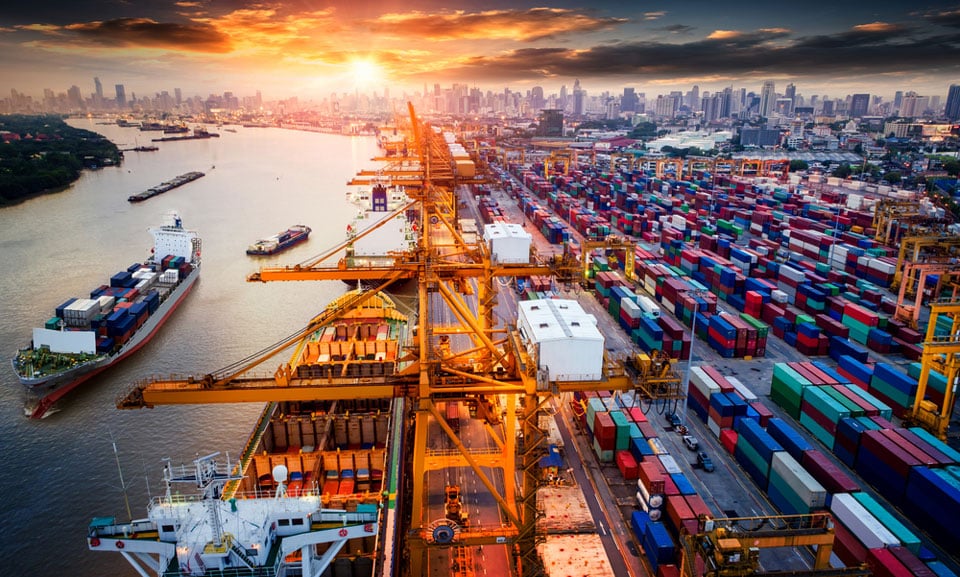The modern CEO must be well-versed in their company’s supply chains

The COVID-19 pandemic has been a wake-up call for corporate executives, revealing how fragile and interdependent our global supply chains truly are. As lockdowns and border closures brought much of the world to a standstill, executives were forced to grapple with logistics and supply chain challenges they could never have imagined, leading to a fundamental shift in how they think about and approach these vital functions.
From soaring freight prices and inventory shortages, now ranging to inventory surpluses and a shortage of warehousing space, the pandemic has reshaped the logistics and supply chain landscape in ways still being felt today. The modern CEO must be well-versed in their company’s supply chains, if not a downright expert. Here are five lessons the modern CEO can take from the last 3 years:
- Monitor freight prices and adjust logistics strategy accordingly
As a CEO, it’s essential to monitor freight prices and adjust your logistics strategy closely. This may involve shifting sourcing and production to different regions or adjusting shipping routes to take advantage of lower prices – or even changing modes of transport entirely.This will help you to minimize the impact of any disruptions that may occur in the future and ensure that you’re getting the best value for your company’s logistics operations.
- Implement flexible logistics solutions
To adapt to fast-changing market conditions, it’s crucial to implement flexible logistics solutions and strategies. This can include utilizing third-party logistics (3PL) providers or a blend of transportation modes to quickly respond to changes in demand and supply and reassessing your logistics technology stack, such as using a more modern TMS or WMS for inventory planning. This will allow your company to be more elastic to the current market conditions. - Implement a flexible inventory management strategy
With inventory levels hitting all-time highs, it’s crucial to implement a much more flexible inventory management strategy. Supply chain bottlenecks damaged just-in-time inventory, and as a result, companies aggressively stocked up to offset this. One method to offset this future risk includes implementing a hybrid just-in-time inventory system, which can help reduce the risk of overstocking and the costs associated with storing excess inventory while maintaining enough stock buffer to prevent any system shocks. - Diversify sourcing locations
With supply chain disruptions and increased demand for certain goods, it’s essential to diversify your sourcing locations. This will help to minimize your company’s dependence on a single location and reduce the impact of any disruptions that may occur. By diversifying your sourcing locations, you’ll be able to meet customer demand and maintain your company’s operations, even in the face of disruptions.This mindset has led CEOs to reconsider “nearshoring” – or bringing manufacturing back to regions closer to the end consumer. According to data from Xometry, 64% of CEOs are now exploring or increasing nearshoring in their operations.[1] Mexico has been a significant beneficiary of US nearshoring and looks to continue that trend.
- Stay informed and make data-driven decisions.
As a CEO, it’s essential to stay informed about the current market conditions and make data-driven decisions. This includes monitoring freight prices, inventory levels, and other vital logistics metrics to ensure that your company is making the best decisions for its logistics operations. By staying informed and making data-driven decisions, you’ll be able to navigate the challenges of cross-border logistics post-COVID-19 and ensure the success of your company’s logistics operations.
In conclusion, the COVID-19 pandemic has dramatically affected how companies handle cross-border logistics. As a CEO, it’s essential to understand the changes that have occurred and how they will affect your company’s logistics strategy. By monitoring freight prices, implementing flexible logistics solutions, a flexible inventory management strategy, diversifying sourcing locations, and staying informed, CEOs can navigate these challenges and ensure the success of their company’s logistics operations. CEOS must stay informed about the current market conditions and make data-driven decisions accordingly to ensure the success of their company’s logistics operations in the post-COVID-19 world.
Written by John Monarch.
Have you read?
The Biggest Business Mistakes in a Recession by John Jarosz.
How to Use Tillable to Find Recent Farm Sale Price Data Near You.
WHO WANTS TO BE A MILLIONAIRE by Christopher Volk.
PAY ATTENTION TO YOUR “GUT FEELINGS” FOR SOUND DECISION-MAKING by Dr. Sheila Ohlsson Walker.
Optimism: What Every Leader Needs Today by Shantha Mohan Ph.D.
Bring the best of the CEOWORLD magazine's global journalism to audiences in the United States and around the world. - Add CEOWORLD magazine to your Google News feed.
Follow CEOWORLD magazine headlines on: Google News, LinkedIn, Twitter, and Facebook.
Copyright 2025 The CEOWORLD magazine. All rights reserved. This material (and any extract from it) must not be copied, redistributed or placed on any website, without CEOWORLD magazine' prior written consent. For media queries, please contact: info@ceoworld.biz








